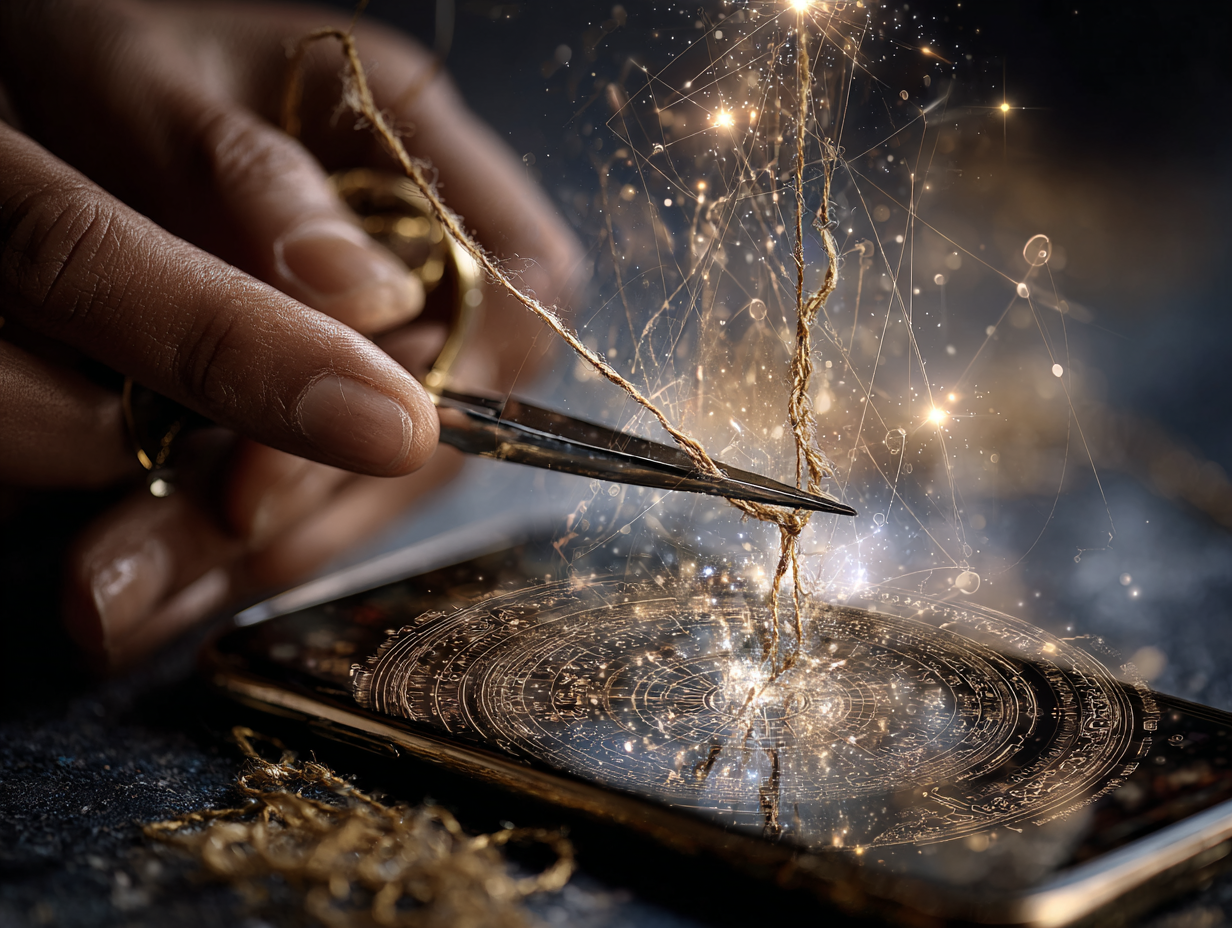Scrolling Is a Spell
Reclaiming Attention in an Algorithmic World
It starts with a flick of the thumb. A moment of boredom. A dopamine whisper disguised as curiosity. And before you realize it, you’ve given away 43 minutes, a chunk of your peace and a sliver of your soul.
This isn’t about “bad habits; “ it’s about architecture. The digital world isn’t neutral. It’s enchanted.
The Algorithm Is an Enchanter
Your smartphone isn’t just a tool, it’s a finely tuned behavioral engine, optimized to hijack your attention — and your nervous system.
Former Google design ethicist Tristan Harris, who co-founded the Center for Humane Technology, famously described smartphones as “a slot machine in your pocket.” Apps use the same variable reward system as gambling: random likes, messages and algorithmic affirmations keep you hooked through unpredictability and intermittent reinforcement.
And the design is deliberate.
Infinite scroll removes natural stopping points. Notifications are engineered interruptions. Personalized feeds curate just enough novelty and negativity to keep your brain chasing closure that never arrives.
This isn’t passive tech. It’s persuasive design — and it’s remarkably effective.
Behavioral psychologist B.J. Fogg, whose Stanford lab trained many early app designers, warned that "tiny habits" stack. A micro-check becomes a micro-dissociation. Multiply that by 96 (the average number of times Americans check their phones per day), and you’ve left the realm of intentionSharon Session Summary ….
You’re not using your phone. Your phone is using you.
What We’re Losing
Social media addiction, now formally studied in clinical psychology, is associated with increased anxiety, depression, and disrupted sleep. But the deeper cost may be harder to quantify.
MIT sociologist Sherry Turkle warns that we are “losing our capacity for solitude” — and with it, the stable sense of self that solitude provides. In her book Reclaiming Conversation, she writes: “Without quiet, there is no reflection. Without reflection, there is no self-awareness. And without self-awareness, there is no empathy.”
Our devices promise connection but deliver fragmentation. They feed us curated perfection while draining our presence.
Dr. Anna Lembke, a psychiatrist at Stanford and author of Dopamine Nation, compares smartphones to “modern-day hypodermic needles” — delivering hits of pleasure through digital dopamine. She notes that compulsive scrolling often leads not to joy, but to emotional numbness and dysregulation.
In my work, I see this energetically: scattered auras, disoriented chakras, depleted lower fields. Clients report feeling “off,” “invisible,” “always behind.”
That’s not failure. That’s the nervous system waving a flag.
Doomscrolling: The Shadow Ritual
Doomscrolling is what happens when you mix an anxious brain with an infinite feed of existential threat.
According to the Resilience Lab, doomscrolling has been directly linked to higher rates of anxiety, depression and disrupted sleep — especially when personalized algorithms serve up distressing news based on prior clicks. It creates a loop: fear clicks → fear content → more fear clicks → eroded trust in the world.
No wonder we’re exhausted.
And the spell is smart. It tells you: you can’t look away. It sells vigilance as virtue. But spiritual vigilance isn’t addiction. It’s awareness without entrapment.
It’s sovereignty.
Detox as Ritual, Not Rebellion
A 2024 systematic review published in Frontiers in Psychology found that digital detox interventions reduced depressive symptoms in a statistically significant way, though effects on stress and well-being were modest unless accompanied by lifestyle shifts.
In other words: temporary detox helps. But ritualized reclamation transforms.
This isn’t about quitting tech or shaming yourself. It’s about weaving new agreements with your attention.
So here’s one to try:
Ritual: Call Your Energy Back
A Reikinetics Digital Cord-Cutting Practice
1. Hide the Hook:
Place your phone in another room. Remove the enchantment object. No visual cues. No buzzes in the field.
2. Breathe into Presence:
Sit on the floor, spine tall. Inhale for four counts. Hold. Exhale for six. Let the exhale pull your energy back from the ethers.
3. Name the Urge:
When the twitch comes to check, whisper it aloud.
“Craving.” “Distraction.” “Fear.”
You’re naming the spell — and that weakens it.
4. Visualize Return:
With every inhale, imagine your focus spiraling back into your core.
With every exhale, let screens dissolve into mist.
See your energy — golden, whole — threading back into your body.
5. Close the Loop:
Open your eyes.
Name your next sacred act: making tea, writing a line, kissing your child’s forehead, touching a tree.
Log back into life, not the feed.
What You’re Really Reclaiming
You are not behind. You are not broken. You are not disconnected — you’re dispersed.
This world doesn’t just need your attention. It needs your attunement.
And the difference between the two is sacred. We are here to reclaim our time not just from the algorithm, but from the lie that we’re only as valuable as our output or engagement. Your attention is your altar. Your body is your boundary. Your presence is your spellbreaker.
Protect them.
Would you like this as a downloadable altar card? Or want help creating a tech-boundary ritual that fits your actual life (not someone else’s idealized version)? Book a Reikinetics session. We’ll rethread your nervous system into something slower, softer and far more alive. You don’t need more discipline. You need a better spell.
And you're allowed to cast your own!





